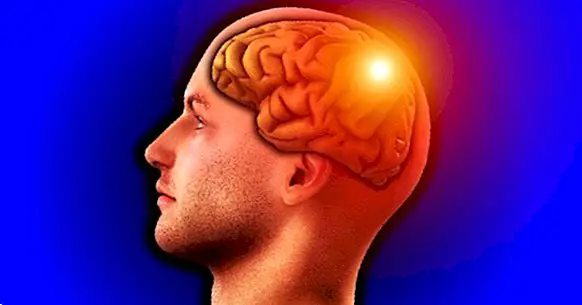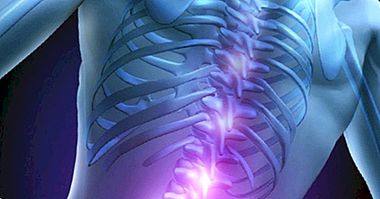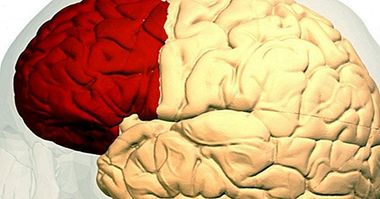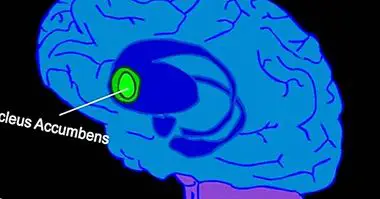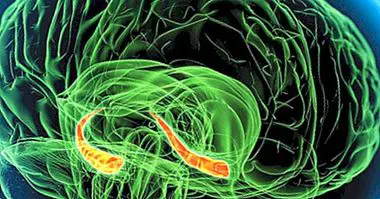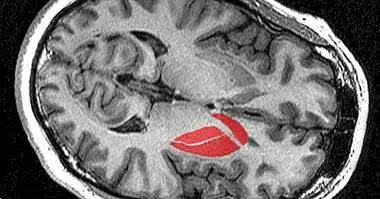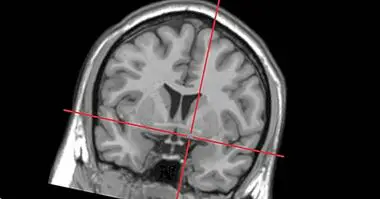Parietal lobe: characteristics and functions
The parietal lobe , located under the cranial bone that gives it its name and between the frontal lobe and the occipital, is one of the most important brain structures due to its size due to the processes in which it participates.
In fact, it is so crucial in successfully performing various mental processes that it is practically impossible to talk about this part of the brain as if it were a "simple" piece of our nervous system or a structure that performs a single characteristic function.
Then we will see what are the characteristics of the parietal lobe and in what processes it participates .
What is the parietal lobe?
This part of the brain is an area of the cerebral cortex that is located just behind the frontal lobe: both lobes are separated by the so-called central groove. But nevertheless, the parietal lobe works together with that and the rest of the lobes of the brain , since it includes a large area of association, which can be seen as a hub in which many types of information are mixed to generate a unit.
Although the parietal lobe specializes more in certain brain functions than in others, one of its main characteristics is that integrates data from different sources . For example, it mixes data related to what is seen and those that speak to us of what is heard, and makes a complete perceptive experience appear.
In the same way, in this area of cerebral cortex there are many memories that, once "stored" by the hippocampus, move until they are fixed in the neural networks of this lobe. In the memories are integrated all the sensory information that comes from the outside world, but also the feelings and emotions linked to that piece of memory. That is, in the parietal lobe both perceptual processes and the regulation of moods flow.
So, if a single word has to be chosen to define what the function of the parietal lobe is, this should be "integration" , a concept that refers to the functions of many other parts of the brain.
Functions of this area of the brain
There are many and varied functions performed by networks of neurons of the parietal lobe , but in a summarized way it can be said that it plays an important role especially in three kinds of processes: the integration and processing of sensory information from different "channels", the processing of symbolic information (in which processes are included). related to language and its use) and the processing of numerical information, something basic to be able to count and perform mathematical operations.
1. Sensory integration
One of the largest areas of brain association is included in the parietal lobe , which means that the information coming from all areas of the body are combined in this area to result in information that is more than the sum of its parts. Therefore, the creation of abstract concepts occurs in part thanks to the parietal lobe, thanks to which we are able to generate, for example, the idea of what a dog is, with its movement, its touch and its associated odor.
But in the parietal lobe not only data about the world that surrounds us and what inhabits it, but also also information about how we relate to that world in real time . For example, it is in the parietal lobe where the data coming from the muscles of the body come together, thanks to which we get an idea about the physical position and the position in which we find ourselves. The same goes for touch. In short, the parietal lobe is responsible for somesthetic processing, that is, the sensory capacity to recognize bodily sensations.
In the same way, the parietal lobe works together with the frontal lobe to offer a feedback about how the voluntary movements that we are doing are going, in order to be able to correct them immediately in the event of unforeseen events.
As a curiosity, this function includes graffiti, which is the ability to recognize letters and words when an element touches the skin making the path of the form of these.
2. Processing of symbolic-analytical information
Another of the great functions of the parietal lobe is to work with symbols and with arithmetic . The mathematical function is carried out together with the previous one, since it is from the analysis of what is perceived sensory as one can imagine a sequence of units with which to work mathematically. As the parietal lobe is a place in which many mental processes are mixed, it makes possible the abstract thought necessary to think in symbols.
The lesions in the parietal lobe
As often happens in psychobiology, part of the functions of a brain structure tell us about the functions performed by them. In the case of the parietal lobe, these injuries talk about the multiplicity of tasks performed by groups of neurons of this part of the brain.
Injury in the left parietal lobe
A wound in the parietal lobe of the left hemisphere can result in the onset of Gerstmann's Syndrome , which includes symptoms such as acalculia (inability acquired at the time of performing calculations), the confusion of the left and right and the difficulty at the time of writing (agraphia).
- Related article: "Alexia and agraphia: the alterations of written language due to brain injury"
Injury in the right parietal lobe
Being in good health the rest of the brain, a lesion in the right parietal lobe can lead to heminegligence , ie, inability to pay attention to the stimuli present on the left side of the body at the same time that the person does not realize this problem (a phenomenon known as anosognosia).
People with heminegligencia totally neglect one of the halves of their body, which means that they do not wash it, dress it or comb it, and in the same way they will act as if they were ignoring everything that happens on one side of their body.
Injury in the two parietal lobes
When the parietal lobes of the left and right hemispheres are injured, Balint Syndrome may appear .
Among its symptoms is the inability to perceive the images as a whole, that is, they see separate elements but we do not know how far they are from oneself or from each other or the position they occupy. In the same way, they seem difficulties in the coordination of the movements of the eyes (optical ataxia).
Concluding
The parietal lobe is characterized by the way it works together with many other areas of the brain , offering them a space in which they can integrate their torrents of information.
This, of course, does not mean that in this part of the cerebral cortex we can not find more or less specialized areas, and in fact it has been seen that several of them are especially involved in vision and in the execution and monitoring of movements in coordination. with the posterior area of the frontal lobe.
However, by its very nature distributed, the brain works from networks of neurons disseminated by many different places , and in this sense the parietal lobe is no exception. Therefore, these functions are very relative, and actually exist thanks to the joint work of several areas of the nervous system.
Bibliographic references:
- Finlay, B.L., Darlington, R.B., Nicastro, N. (2001). "Developmental structure in brain evolution". Behavioral and Brain Sciences. 24 (2): pp. 263-308.
- Manes, F., Niro, M. (2014). Use the brain. Buenos Aires: Planet.
- Ratey, J. J. (2003). Brain: instruction manual. Barcelona: Mondadori.

